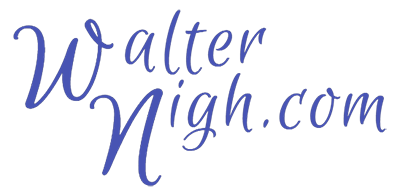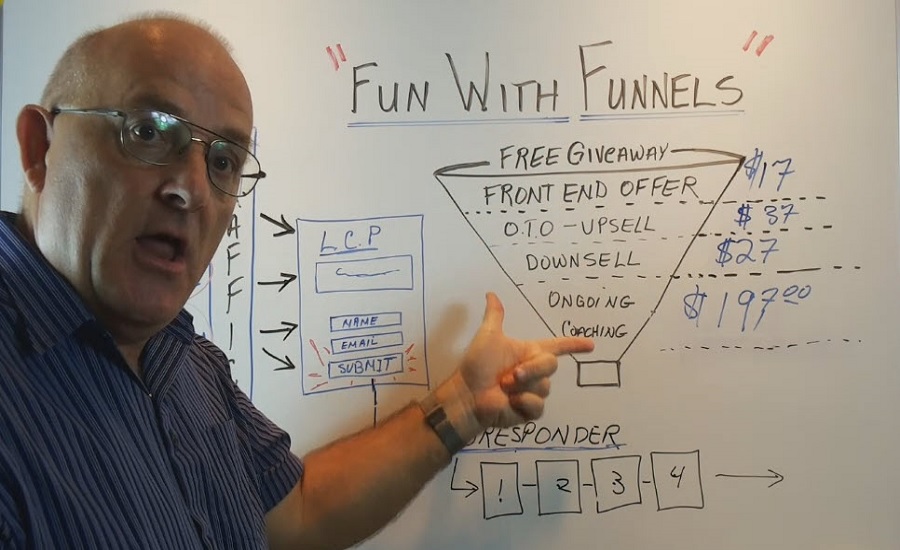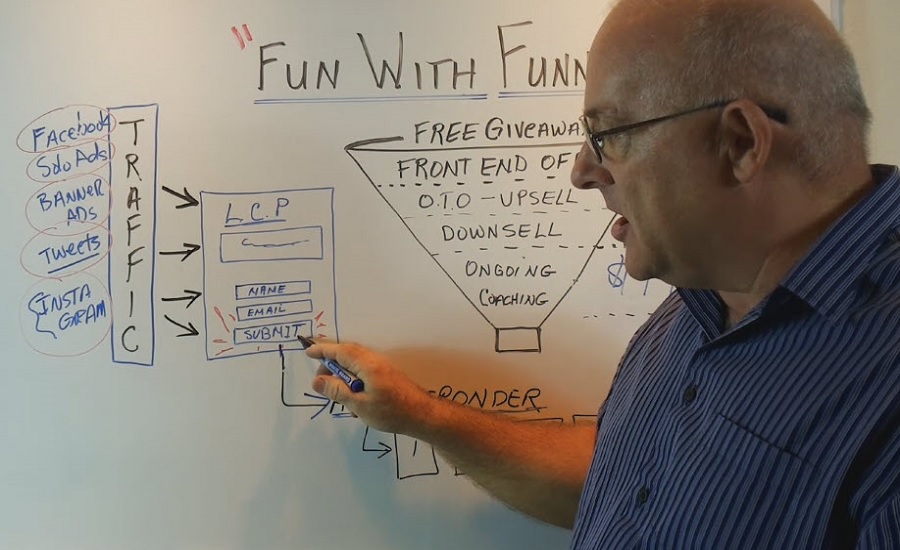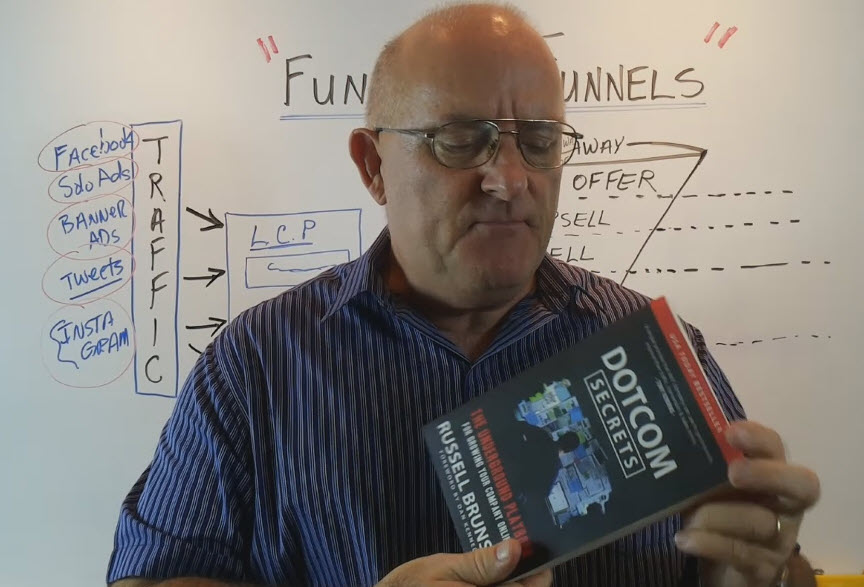
Module 5: Fun With Funnels
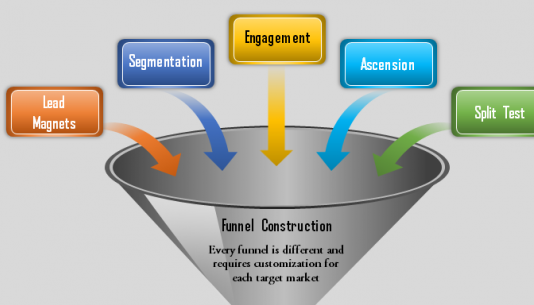
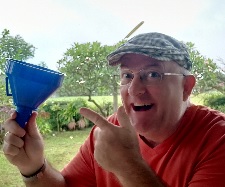 Funnels . . .
Funnels . . .
. . . a common household item, a funny little gadget, cylindrical over all, with a narrow exit at the bottom and a large mouth at the top! Kinda like a politician!
The dictionary says: “A tube or pipe, wide at the top and narrow at the bottom, used for guiding liquid or powder into a small opening.” Okay, very simple and easy. When you pour liquid from one container into another, a funnel helps focus the flow and control spillage.
I’m fascinated with funnels! They’re one of my favorite things to build for my online business. Funnels show up everywhere, and whether you realize it or not, influence our daily lives and the things we buy offline or online.
Where are online funnels?
Funnels and funnel strategies are at work at your local bank, your cell phone center, your grocery store, maybe even at your beauty salon! Discount coupons are “lead-magnets” to entice you into the doors of a business – into their “sales funnel” where well-informed, guided sales persons cheerfully introduce you to additional items for sale to “upgrade, purchase matching accessories, and buy add-ons.”
Everyone is probably a part of a funnel, somewhere, every day!
The official definition of an online sales funnel?
“A sales funnel, also called a purchase funnel, is the visual representation of the customer journey, depicting the sales process from awareness to action. The funnel, which is sometimes referred to as a marketing funnel or revenue funnel, illustrates the idea every sale begins with a large number of potential customers, and ends with a much smaller number of people who actually make a purchase.” (searchsalesforce.com)
You offer some element of incentive – kinda like a bribe – to a lead or motivate a visitor to exchange their name and email address for an item of value you will sent them.
Think of it as a lead magnet! They opt into your campaign and become part of your funnel – at the top end.
This process is closely tied to building your subscriber list because that’s where you’re trying to funnel your visitors.
Once you begin to offer quality content and targeted products, you lead them further and further into your funnel, until they reach into their wallet, pull out their credit card, and buy what you are offering.
The dynamics of a funnel
If you take a look at your kitchen funnel, you will notice the funnel is wide at the top and narrow at the bottom. In an online funnel, the top of the funnel, the widest part, is where the majority of your leads and contacts enter. Through the process of communication of your value content and products, they make choices to purchase or not to purchase, depending on the needs they have or problems they want to solve.

The reason a funnel decreases toward the bottom is simple math – the number of people purchasing in relation to the number of people entering at the top.
For example, if you have 100 people enter the top your funnel, on average only 20 people, or 20% will actually purchase your offer. With an additional offer, perhaps four people, or 20% of the 20%, will go on to purchase more of your products or services.
Those entering at the top of the funnel could be tire-kickers, people who only want your free giveaway and aren’t serious buyers. This is normal, like when you stop at a car dealership to kick a few tires, then drink their coffee, eat a donut, and use the toilet.
It’s an integral of a sales funnel.
Generally, the further a customer descends into your funnel, the higher the price of the products or offerings. This higher price helps to qualify (or disqualify) your customers into single or multiple purchases, and to take care of the enthusiastic buyers ready to buy everything you have to offer. These are the crème de la crème! Customers and clients who trust you explicitly and want what you have to offer.
How do you build a funnel?
The structure of a funnel is very important. How you lead people through the funnel dictates good success or great success. Most funnels have the following components:
1. A front-end offer (FE) – Generally a low-priced item to get visitors in the door. Or it could be a free item – one of your “lead magnets”.
2. An up-sell, also known as a one-time-offer (OTO) – This could be a larger or advanced version of your FE product. Example: an MP4 video with an MP3 audio version of the same material you offered in your FE. Obviously this up-sell will cost more money. The element of “scarcity” – they can only get it once – may increase sales. A funnel could include multiple up-sells, depending on the structure of the funnel. Some funnels may allow customers to choose from several OTOs.
3. A down-sell (DS) – If the visitor doesn’t take advantage of your limited offer or Upsell, then they are offered a “down-sell” which is a reduced package and value of the up-sell. Like up-sells, you could have multiple down-sells, depending on the design of the funnel.
4. A back-end offer (BE) – This final offer is usually the highest value of the entire funnel. Seasoned marketers want extra help understanding and engaging what they just purchased.
The complexity of funnels increases when you “cross-sell” to other products or to other funnels that may interest your customer.
A key ingredient to an effective funnel is an autoresponder.
Without this invaluable tool, you couldn’t even start getting people into your funnel. You’d have no way to communicate and send them promotional emails.
Online marketers have been using funnel technologies for a long time to create enormous reoccurring income, like their business is on autopilot. In like manner, you need to learn how to effectively and efficiently engage with funnels to create your income stream and make money non-stop!
If you’re promoting a product that costs less than $10, you can make a good income with good traffic and conversions. However, if you include this $10 product in a funnel, your $10 sale can be worth exponentially more! This is the awesomeness of funnels!
Funnels are exciting to design. Watch one in operation…
Russell Brunson is a successful and well-known marketer, trainer, mentor and coach. He’s earned millions of dollars through his marketing efforts and his funnels and has several books to his credit about online marketing and sales.
His most recent book – “Dotcom Secrets” – lays out the seven basics for his type of funnels. Rather than putting prices on the layers of his sales pathway, he lists particular phases of a funnel:
Traffic Temperature (Hot, warm, cold); Your Pre-frame Bridge; Qualify subscribers; Qualify buyers; Identify hyper-active buyers; Age and Ascend the relationship; and Change the selling environment.
Further complexity to his style of funnels is listed in the next chapter of his book: 23 building blocks of a funnel. The building blocks for his funnels include things like bumps, quizzes, baits, presell pages, webinars, tripwires, straight sales and Affiliate recommendations, just to name a few!
Russell’s book clearly shows you how complicated and intricate funnels can be.
In one of my own books, I simplify the whole process with only six phases of a marketing funnel:
1. Traffic – To me it always starts with traffic: getting eyes on my offers, and visitors to my landing capture pages.
2. Lead Capture – The most important element of any funnel, without which you have zilch, nada, nothing! (Ok, actually this is the same for each phase. Every phase is the most important!)
3. Building relationships – The time spent communicating to your subscribers, building trust, solving problems, giving keys for survival, pats on the back, kicks in the butt, or whatever is needed to develop a bond of confidence between you and the people on your email list.
4. Selling Phase – Offering your visitors a paid solution to a problem they may be having, an opportunity to purchase a tool they need or online help, additional training for some area they may be struggling in, or an intimate 1-on-1 coaching to guide them through their online breakthrough.
5. Monetization – Ahhh, yes! The phase where the money hits your wallet! (The most important phase, right?) This is where the visitor digs out their credit card, or when they log into their Paypal account, and click “Buy Now”. What an awesome feeling when you realize people want your products or services and are willing to pay you for your suggestions and solutions.
6. Automation – The phase where the value of an awesome autoresponder kicks in! Every funnel you build should operate totally on auto-pilot – making you money while you sleep, are on vacation, eating breakfast, or changing your socks.
Automation means you can be building trust while fly-fishing in the Rockies or marlin fishing off the coast of Hawaii. (Yes, been there, done that, got the photo!)
You can strengthen a relationship during your drive to Grandma’s house with your children asleep in the back seat of your car, or while you and your wife are enjoying a romantic dinner with a fat juicy steak and a glass of wine.
I could go on, but this is making me hungry and my cholesterol level is already too high!
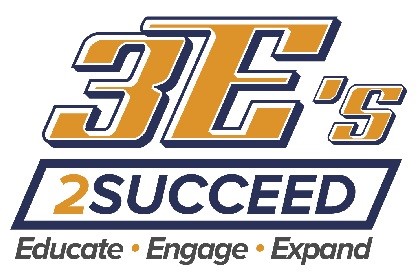
In the following video, I show you the framework for the First Steps Online Funnel.
Here you will discover why I wrote First Steps Online and how I structured the full complete funnel.
